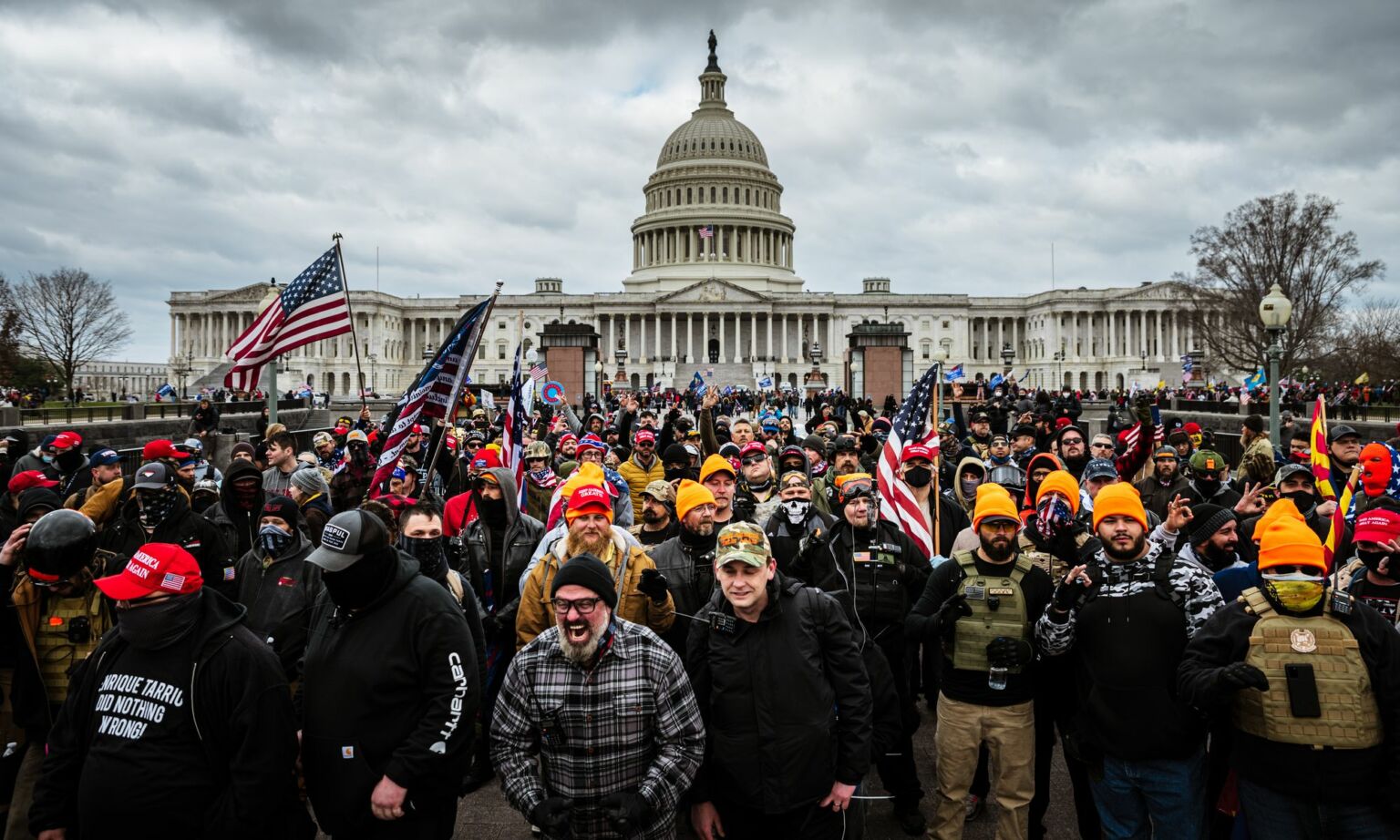
Long-read
A showtrial of populism
The pawnshop McCarthyism of the January 6 Committee is a menace to democracy.
Want to read spiked ad-free? Become a spiked supporter.
Donate to spiked this Christmas, and help keep us free, fearless and independent.
So the ‘January 6’ Committee has spoken. It has decreed that Donald Trump was to blame for the storming of the Capitol building on 6 January 2021. He was the mastermind of a ‘multi-part conspiracy’. He whipped the 2,000-strong mob into a frenzy of insurrectionary behaviour with the aim of overturning the 2020 presidential election result and keeping himself in power. And because he was ‘engaged in an insurrection’ – an insurrection being a violent uprising against government – he should be barred from public office, the committee advises. No Trump 2024. No Trump the politician ever again.
The legacy media is thrilled with this stern rebuke of Trump and his wacky acolytes. They especially like that the committee has referred criminal charges against Trump to the Department of Justice. Maybe this most wicked of presidents, this man so loathed by the cultural elite, will end up in the slammer. ‘Trump faces FORTY YEARS in prison’, headlines yell. CNN can barely hide its glee that Trump could be ‘barred from office’. ‘Trump in 2024 can now be stopped’, says NBC. Not by the voters, you understand. The likes of NBC don’t trust them. No, by the determination of a committee and others in the American bureaucracy who might officially brand Trump an ‘insurrectionist’ and thus unfit to darken the doors of political power ever again.
We need to cut through all this noise. We need to take a step back from the political pantomime of the January 6 hearings and ask ourselves what is really going on here. Was that mayhem up on the hill nearly two years ago really an ‘insurrection’? Maybe even a ‘coup’, as many in the media still call it? Did Trump orchestrate it? Did anybody? Even more pertinently, might the elites’ response to January 6 – their hysteria over ‘domestic terrorism’, their blather about ‘insurrectionary populism’, their oftentimes hateful disdain for the ‘semi-fascists’ in the masses who back Trump – end up having a more deleterious impact on democracy than the events of January 6 itself?
There are many reasons to be sceptical about the official and media narrative about January 6. We all remember that day. We remember seeing shocking footage of bitter, conspiratorial Trump fanboys smashing windows and breaking down doors to enter Congress. One briefly walked off with the speaker’s podium. Some pounded on the office doors of congressmen and women and even got into Nancy Pelosi’s office, which they ransacked and vandalised. One left a placard saying ‘PELOSI IS SATAN’ on the windshield of a cop car outside. It was violently infantile and highly undemocratic, deserving of the fullest condemnation.
And we know why they did it. It was because, like Trump himself, these vandals were in thrall to a conspiracy theory about the election having been stolen from The Donald. They believed there had been a nationwide fraud to bin votes for Trump in order to elevate the sainted Joe Biden to the White House. The lack of proof for this vast conspiracy against electoral democracy mattered not one jot. These people just knew Biden was a ‘fake president’ and thus they stormed the Capitol during the joint session of Congress that would have formalised Biden’s victory in order to shout or weep or something. It was the tantrum that was heard around the world.
Scepticism about the official version of events does not mean being naive about the events. January 6, thanks to these 2,500 bozos, was a shameful day for America. But was it an insurrection? A coup? It wasn’t. That is hyperbole. The more one learns about January 6 – or, rather, the more one unlearns the original story of that day as told by the media elites – the more one can see that this was a messy, violent affair, yes, but not a plot against government, not an organised act of regime preservation. It is increasingly clear that establishment propagandists have reimagined the January chaos as a January coup in order to fortify their own narrative about Trumpism – and populism more broadly – being a unique political menace that must be crushed.
The media story about January 6 actually unravelled swiftly. There was early chatter about it being an ‘armed insurrection’. There was outraged reportage on people, including cops, being killed. We were told that one officer, Brian Sicknick, was bludgeoned to death by the bloodthirsty mob. ‘He dreamed of being a police officer, then was killed by a pro-Trump mob’, said a headline in the New York Times. Members of ‘the mob rampaging through the halls of Congress’ struck Officer Sicknick ‘with a fire extinguisher’, the NYT reported. A truly chilling vision. It all added up to a very serious ‘mob assault on democracy’, observers said in the days after January 6. It was an ‘attempted coup d’état’, we were told; an invasion of ‘a citadel of democracy’ that ‘stirred echoes of the angst and blood of the Civil War era’.
It was made to sound truly nightmarish. But almost all of this, all these early depictions of the riot as a war-like insurrection, turned out to be untrue. An ‘armed insurrection’? What arms? We were led to believe gun-wielding fanatics had taken hostage the citadel of democracy that is Congress. Scores of the rioters were indeed charged with ‘entering a restricted area with a dangerous or deadly weapon’. But hardly any of those weapons were firearms. The weapons included a snowboarding helmet, a skateboard, a walking cane, bear spray, a metal sign, a baseball bat, a flagpole. A few also had knives. You don’t have to downplay the potential harm that could be caused by such instruments – a baseball bat, for example – to question the depiction of this event as an ‘armed insurrection’. If this really was a planned armed coup to overthrow democracy, would people rock up with skateboards?
As for the bloodshed, so bad it apparently echoed the Civil War, it quickly became clear that not a single person was directly killed by the Capitol mob. Including Officer Sicknick. Five people died as a result of January 6. Four of them were Trump supporters. Two of those died from heart attacks and one from amphetamine poisoning. The only person violently killed was Trump supporter Ashli Babbitt, a veteran of the US Air Force, who was shot to death by a Capitol cop as she and others tried to break through a barricaded set of doors within the Capitol building. And Officer Sicknick? The only non-rioter who died following January 6? He died of a stroke, in hospital, on 7 January.
The story of Officer Sicknick’s death is incredibly important. It was a key feature of the early media narratives on January 6 and yet it was based on a falsehood. Sicknick was not attacked with a fire extinguisher. He had been sprayed with some kind of chemical, but he phoned family members after the riot to say he was okay. He collapsed on the evening of 6 January and was taken to hospital. He suffered two strokes as a result of a blood clot in his brain and died on 7 January. Despite police officers’ claims that he died as a result of injuries sustained in the riot, and the NYT’s story about him being bludgeoned with a fire extinguisher, the medical examiner of Washington found in April that he died of natural causes. He had no injuries and there was ‘no evidence that [he] suffered an allergic reaction to the chemical spray’.
It is of course possible that the riot exacerbated Officer Sicknick’s condition. But it remains the case that reports about his head being smashed in by a Trump-worshipping mob were one of the worst cases of fake news of recent years. As Glenn Greenwald says, the false Sicknick story became a central feature of the establishment’s January 6 narrative. It was repeated constantly by liberal media outlets. It was even mentioned in ‘the official record of President Trump’s impeachment trial in the Senate’. That’s how central Sicknick’s death was to the entire elite crusade against Trumpism. As late as June 2021, Joe Biden was talking about the ‘criminals’ of January 6 who ‘kill[ed] a police officer’. Everyone ‘lied repeatedly about Officer Brian Sicknick’s death’, as Greenwald says.
And the reason they did so is not difficult to fathom. It’s because Sicknick was the ‘only one’, says Greenwald, that ‘they could claim was killed by pro-Trump protesters’. His death was the only proof they had of the bloodthirsty intent of the Trumpist rioters. Sicknick became a ‘toy’ of elite propagandists, ‘to be played with and exploited in order to depict the January 6 protest as a murderous orgy carried out by savages so primitive and inhuman that they were willing to fatally bash in the skull of a helpless person’, Greenwald writes. The untimely demise of a young cop was cynically used to underline the story about January 6 being a violent coup. Sicknick was just a bit-part actor in the information warfare of the anti-populist elites.
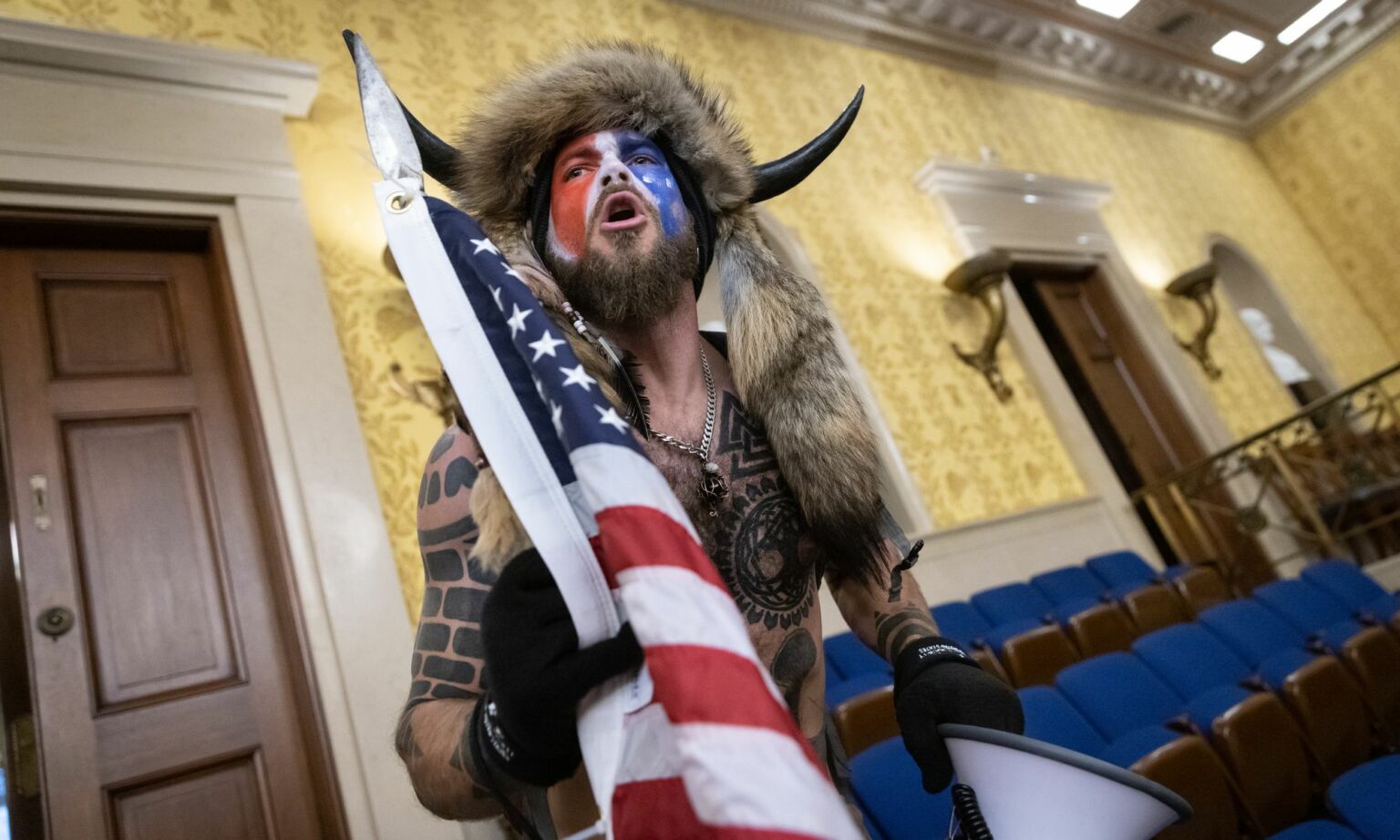
So if January 6 was not an armed insurrection, in the way we would traditionally understand such a thing, and if the rioters didn’t actually kill anyone, can we at least say it was an organised stab at dismantling a democratic vote? This, too, is a highly questionable claim. Who organised it? How? And if it was organised, why was it so utterly shambolic and shortlived? As Wilfred Reilly aptly characterised that crazy day, ‘Rioters fought the police, briefly occupied the office of the House speaker Nancy Pelosi, stole the speaker’s podium from the congressional chambers, and just milled about in confusion’. Hardly a concerted effort to thwart the rule of democracy. Numerous commentators likened January 6 to the Beer Hall Putsch, the Nazi Party’s failed coup d’etat in Munich in 1923. This is pure historical illiteracy. 1923 was a clearly organised, Mussolini-inspired campaign to seize Munich and use it as a base to march against the Weimar government more broadly. A bloke in Native American headdress taking selfies in Congress for half an hour is not the same thing.
And what about the claim of the January 6 handwringers that this thing, whatever it was, was the evil handiwork of Donald Trump? That he oversaw a ‘multi-part conspiracy’, in the words of the January 6 committee, to topple American democracy, in which this so-called coup played a key part? Here, too, the narrative crashes against a reality that is more haywire and mundane. Trump certainly behaved irresponsibly both on the day itself and before it. His blather about the election being stolen was heavy on the hysteria and very light on truth. He certainly sowed suspicion towards the political institutions of America among his keenest followers. And his failure to order the National Guard to assist the Capitol cops as the riot broke out – an order then vice-president Mike Pence had to issue instead – certainly suggests he did not treat the attack on the Capitol with sufficient seriousness.
But where is the evidence that he planned it, or even that he expressly ‘incited’ it? The January 6 committee describes Trump working with ‘numerous co-conspirators’ who ‘agreed with and participated in [his] plan to impair, obstruct and defeat the certification of President Biden’s electoral victory’. We all know Trump tried to badger officials – not with a great deal of luck – to uncover evidence of electoral fraud. But establishing a link between that and the high-adrenaline storming of the Capitol by hardcore Trumpheads is very difficult indeed. In my view, it just hasn’t been achieved. Trump behaved badly and there was also a riot. These are different things. It looks to me less like a conspiracy than a case of political exhaustion briefly veering into havoc and bedlam.
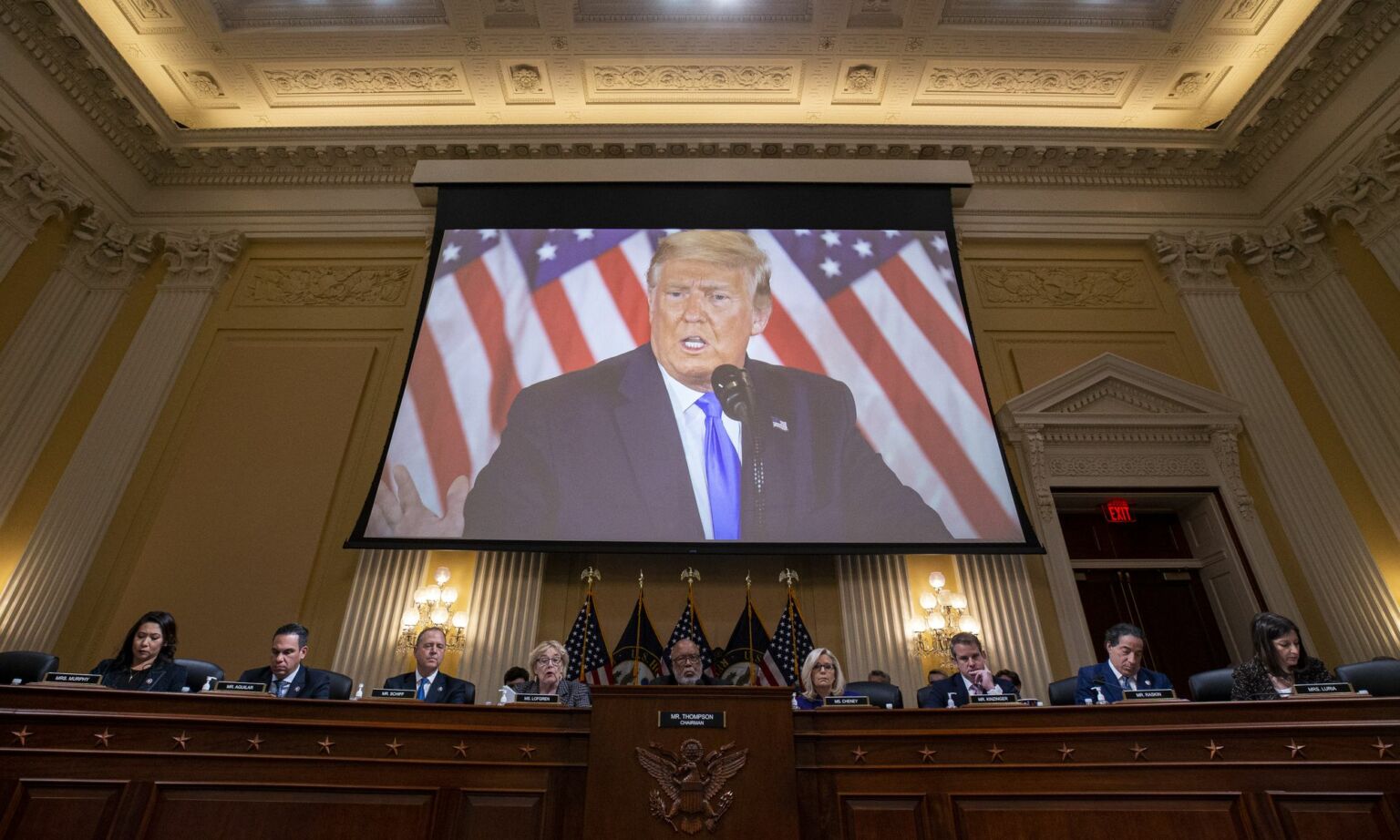
To some of us, there are two stories of January 6. There’s the thing itself, which the vast majority of people agree was very bad. And then there’s the mythologisation of it, the elevation of it from chaotic behaviour into violent conspiracy. This was the truly conscious aspect of January 6 – the exploitation of this strange event by an anti-populist establishment keen to reprimand the electorate’s Trump experiment and warn them off engaging in any further acts of anti-elite protest voting. Indeed, the January 6 committee hearings, and the liberal media’s coverage of them, often came across as a showtrial of populism, a kind of pawnshop McCarthyism, only the target of official rebuke this time was not reds under the bed but ‘domestic terrorists’ in suburbia.
It was ultimately populism that was found guilty for the crimes of January 6, especially in the stiff judgement of the media elites. There was talk of ‘insurrectionary populism’. It was the ‘populist narrative’ that ‘led directly to the assault on the US Capitol’, said one writer. The real problem is ‘authoritarian populist Americans’, we were told. And of course we had Biden denouncing the ‘semi-fascism’ of the Trump worldview, building on Hillary Clinton’s branding of Trump supporters as ‘deplorables’. These McCarthyite demonisations of swathes of the public reached a frenzy after January 6 when every politico and observer seemed to obsess over ‘domestic terrorism’ – a tag that is now applied not only to the January 6 rioters but even to parents who push back against the woke agenda in schools.
The truth is that the post-January 6 hysteria of the elites poses a graver threat to democracy and freedom than January 6 itself. Just as earlier establishments used authoritarian means to clamp down on supposed Communist infiltration and to deal with the scourge of Islamic terrorism, so today’s establishment warns darkly of ‘domestic terrorism’ and proposes controls on speech, especially on social media, in order to deal with it. The transformation of January 6 almost into the founding myth of a righteous woke elite, an elite that feels it must distance itself from the deplorable throng and use whatever means it has at its disposal to thwart ‘extremist’ rumblings, will have far more divisive consequences for the United States of America than the storming of the Capitol will.
A final note: the hypocrisy! Some of the very people slamming Trump for refusing to accept the 2020 election result likewise refused to accept that Hillary lost in 2016. Hillary herself has said victory was stolen from her. The British liberals shocked by Trump’s election conspiracy theories themselves spent six years trying to thwart the largest democratic vote in the history of the UK – the vote for Brexit. And many of these folk either supported or quietly looked the other way during the BLM riots of 2020, which were far more destructive than January 6, leading to at least 25 deaths and billions of dollars of damage. You think we’re going to take lectures on democracy and violence from elitists who have frequently shown contempt for the former and sympathy for the latter? Think again.
Brendan O’Neill is spiked’s chief political writer and host of the spiked podcast, The Brendan O’Neill Show. Subscribe to the podcast here. And find Brendan on Instagram: @burntoakboy
Pictures by: Getty.
Who funds spiked? You do
We are funded by you. And in this era of cancel culture and advertiser boycotts, we rely on your donations more than ever. Seventy per cent of our revenue comes from our readers’ donations – the vast majority giving just £5 per month. If you make a regular donation – of £5 a month or £50 a year – you can become a and enjoy:
–Ad-free reading
–Exclusive events
–Access to our comments section
It’s the best way to keep spiked going – and growing. Thank you!




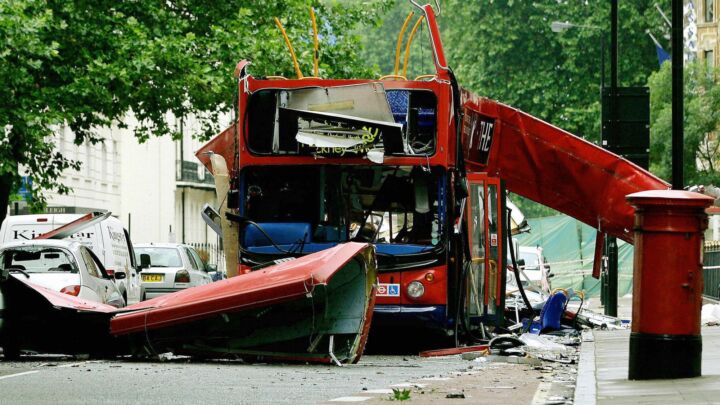

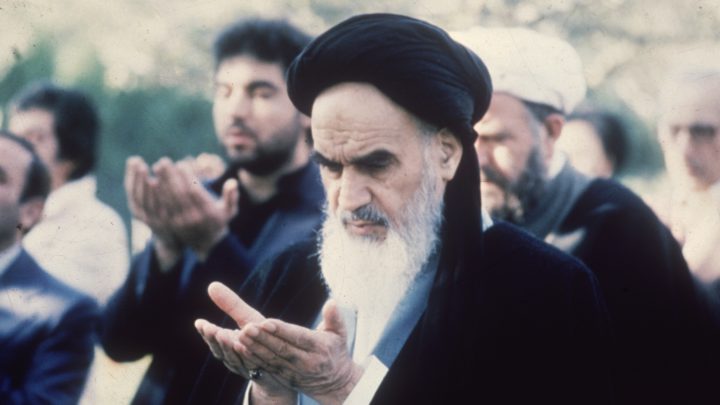

Comments
Want to join the conversation?
Only spiked supporters and patrons, who donate regularly to us, can comment on our articles.